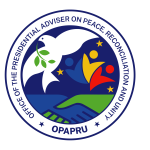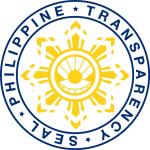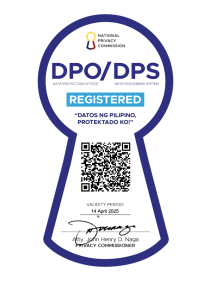FREQUENTLY ASKED QUESTIONS ON THE GPH – CBA – CPLA PEACE PROCESS
Who is the CBA-CPLA?
The CPLA is a former faction of the CPP-NPA. Fr. Conrado Balweg established the CPLA to focus on their fight for self-determination of Cordillera people and the preservation of their traditional lifeways.CBA, meanwhile, is the organization of tribal elders and the political
CBA, meanwhile, is the organization of tribal elders and the political arm of the group.
How did the Philippine Government and the CBA-CPLA arrive at signing the 2011 Memorandum of Agreement?
On 13 September 1986, the CPLA agreed to a ceasefire agreement, known as the Mt. Data Peace Accord or Sipat, with the administration of President Corazon Aquino.
In 2010, President Benigno Simeon Aquino III brought the Mt. Data Peace Accord to a full circle that led to a series of dialogues and the realization of CBA-CPLA’s desire for an ili-led/village-led development and the completion of ceasefire.
Twenty-five (25) years after the signing of Mt. Data Peace Accord, the CBA-CPLA and the GPH have agreed to explore a stable and lasting mutual cooperation for peace and development through the 2011 MOA Towards the Final Disposition of Arms and Forces of the CBA-CPLA and its Transformation into a Potent Socio-economic Unarmed Force.
What is the 2011 Memorandum Agreement signed by the GPH and the CBA-CPLA?
The 2011 Memorandum of Agreement “Towards the Final Disposition of Arms and Forces of the CBA-CPLA and its Transformation into a Potent Socio-economic Unarmed Force” is a Closure Agreement signed by the GPH and CBA-CPLA on 4 July 2011. It is the culmination of the 1986 Mt. Data Peace Accord. It has five (5) main components that aim to pursue a lasting peace in Cordillera, and to hasten the progress and development in the region.
What are the five (5) components of the 2011 MOA?
The five (5) components of the MOA are the following:
- Disposition of arms and forces – A gradual process of disposition of arms and forces by the CPLA, and an integration package that includes options, such as integration into the Armed Forces of the Philippines (AFP), employment as forest guards of the Department of Environment and Natural Resources (DENR), and livelihood;
- Economic reintegration – CPLA members are provided with assistance in securing employment or other source of income including livelihood projects as a step towards disarmament;
- Community development – A joint undertaking of community development projects for peace and development in 57 areas in Cordillera as identified by the CBA-CPLA without excluding anyone in the community from the benefits it will
bring; - Inter-municipal and inter-barangay development projects – To address the aspirations of the people of the Cordillera for economic development, both the GPH and the CBA-CPLA agreed to pursue development projects for barangays and municipalities where the CBA-CPLA have established their presence; and
- Documentation of the CBA-CPLA struggle – The GPH agreed to provide fund support to CBA-CPLA as they produce the
manuscript of their history and documentation of their struggle.
What is the status on the implementation of the five (5) components?
The GPH and the CBA-CPLA have both been consistent in complying with the 2011 MOA.
- As of 2015, 337 of the 444 inventoried firearms have been turned in and are now under the custody of the Police Regional Office in Cordillera for demilitarization and disposal. All 27 inventoried explosives have already been turned in and disposed through detonation. A total of P4.43 million have been remunerated from 2011 to 2015;
- Former CPLA members organized themselves into people’s organizations – at least one per Cordillera province – and
collectively registered in the SEC as CFPDI in 2011; On economic reintegration, 168 profiled CPLA members or next of kin have been integrated to the AFP; while, 511 more have been employed as DENR’s forest guards; - A total of P220.41 million was allocated for the implementation of 81 community development projects in six (6) provinces of the region;
- Batwagan Bridge and Access Road was constructed to increase sustainable livelihoods for Mt. Province and Cordillera as part of the inter-municipal and inter-barangay development initiative; and
- The story of the six (6) provinces and the history of the CBA-CPLA are captured in the peer-reviewed documentation of the CBA-CPLA struggle turned over to the CBA in 2014.
What is the significance of the 2011 MOA to the people of Cordillera?
Since the signing in the 2011, the positive results brought about by the MOA in Cordillera have been evident in improving the lives of the Cordillera people.
- As of 2015, 50 PAMANA projects have been fully completed in the provinces of Abra, Apayao, Benguet, and Kalinga while
31 more PAMANA projects under the 2011 MOA are on its way to completion in the provinces of Ifugao and Mt. Province; - 885 individuals from all six (6) provinces are enjoying the health insurance program;
- 745 families are safe with a shelter from National Household Targeting System (NHTS) sponsored by local government units and private institutions.
- 187 students enjoyed study grants, while 40 individuals are endorsed for the program; and
- Several infrastructure projects have also been implemented to improve the socio-economic state of the region.






